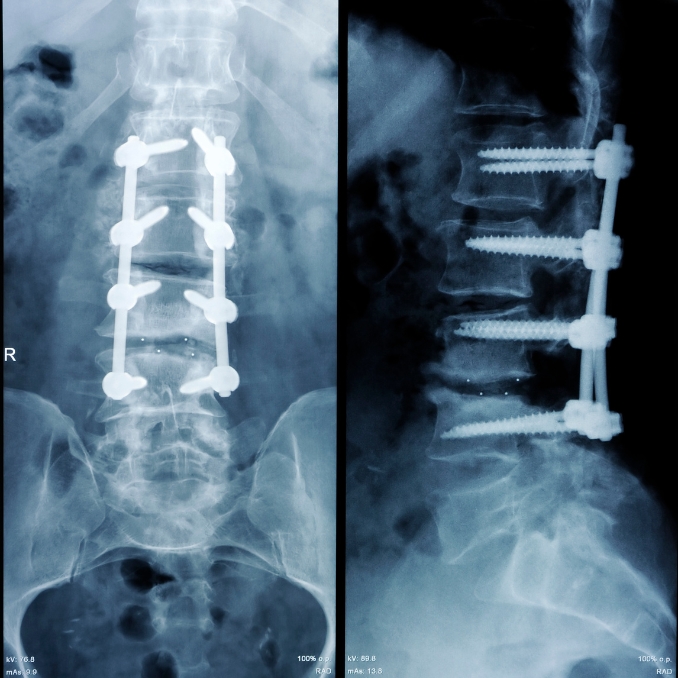Chiropractic care emphasizes the connection between the body’s structure, especially the spine, and its overall function in healthcare. Over the course of its history, chiropractic medicine has faced both internal and external controversies and criticisms. Although chiropractic care has demonstrated certain safe and beneficial outcomes, there has been a prolonged discourse regarding its efficacy over an extended period.
Its role continues to raise numerous questions:
- Should it be the first thing tried when someone needs treatment?
- Or should it only be used if other treatments don’t work?
- Do some people benefit more from chiropractic care than others?
If you’re looking for answers about whether chiropractic is safe, just keep reading.
What’s The Truth About Chiropractors?
Chiropractors are not medical doctors[1]. However, they undergo extensive training and need a graduate degree to practice.
Chiropractors are trained healthcare experts who use hands-on adjustments to align the spine correctly and help the body heal naturally. In fact, over 70,000 chiropractors[2] are currently registered in the US.
They believe that manipulating the spine manually can improve a person’s health without surgery or medicine. This belief is evident as more than 35 million people visit a chiropractor each year, with over one million adjustments performed daily across the US.
Chiropractic medicine can effectively ease different kinds of sudden and long-lasting pain, such as neck pain, back pain, and specific types of headaches.
Claimed Benefits of Chiropractic Medicine

Chiropractic Medicine lessens pain and disability for individuals with particular sudden or ongoing conditions, including:
1. Low Back Pain
Low back pain (LBP)[3] is one of the most common causes of years lived with disability globally. The American College of Physicians (ACP) (2017) recommends spinal manipulation for patients with low back pain.
Also, as detailed in the published study conducted by Paige et al. (2017), spinal manipulation provided modest improvements in pain relief and functionality for individuals with acute low back pain. This was also supported by the study by Goertz et al. (2018), which was published in JAMA Network Open.
Moreover, the study involved 750 active-duty military personnel experiencing back pain who were divided into two groups. One group received standard care, which included medications, self-care, and physical therapy, while the other group received standard care along with up to 12 chiropractic treatments.
After six weeks of treatment, participants received both the standard and safe chiropractic care:
- Reported lower levels of pain intensity
- Experienced reduced disability and greater improvement in function
- Reported higher satisfaction with their treatment
- Required less pain medication.
2. Neck Pain
Neck pain also ranks as one of the most common reasons why elderly patients seek out chiropractic treatment[4].
In the study of Hanelinea & Coopersteinc (2009), older patients who received chiropractic treatment showed improvement in all measured outcomes from their initial assessment to the final evaluation. Approximately half of the patients responded to a satisfaction questionnaire, with nearly all expressing satisfaction or high satisfaction with the care they received. Additionally, the majority indicated they would opt for chiropractic care again if faced with a similar issue in the future.
In fact, another study examined patients’ safe experiences with chiropractic care for chronic neck pain. It found that patients generally had positive and safe experiences with chiropractic care, especially regarding communication and appointment access. (Hays et al., 2019).
3. Headaches
Chiropractors often treat cervicogenic headaches and migraines.
- Cervicogenic headaches are secondary headaches because the pain typically originates from another place, often the neck.
- Migraine headaches cause intense, pulsating pain and typically affect one side of the head. There aren’t many non-medication options for dealing with these chronic headaches.
Many headache patients who consult chiropractors have features of recurrent headaches and experience increased levels of headache disability.
Bronfort et al.’s (2001) study reviewed several trials to determine the effectiveness of spinal manipulation for chronic headaches[5]. They also found that spinal manipulation showed promise in treating tension-type and migraine headaches.
All Studies Have Limitations

Chiropractic is no exception. Although certain studies support the effectiveness of chiropractic for back pain, neck pain, and headaches, they also identified limitations.
In the study of Piage et al. (2017), there is a lack of high-quality research, insufficient detail in describing chiropractic manipulation, significant variation among studies, and uncertainty about the clinical significance of improvements. Additionally, publication bias may be a concern.
Moreover, Goertz et al. (2018) stated that lower back pain is complicated because it’s hard to know exactly what’s causing it for each person. Comparing chiropractic care with other treatments, like regular medical care, is tricky because chiropractic involves hands-on techniques. Also, it’s essential to recognize that chiropractic treatment alone may not be comprehensive, as it frequently involves additional standard care.
On the other hand, Hanelinea & Coopersteinc (2009) admitted a lack of a control group or comparison with other treatments in their study, making it difficult to determine the effectiveness of chiropractic care compared to alternative approaches. Furthermore, the study only assessed short-term outcomes up to 26 weeks, so the long-term safe effects of chiropractic care for acute neck pain remain unclear.
Also, the study of Hays et al. (2019) relied on patients reporting their experiences, and some were paid to answer questions, which could affect the results. Plus, only some people who were eligible for the study took part, which might mean those who joined had better and safe experiences with chiropractic care. Furthermore, the study couldn’t separate data for patients with specific chronic conditions, which makes it harder to apply the findings to all chiropractic patients with chronic pain.
Lastly, Bronfort et al. (2001) found nine trials involving 683 patients with chronic headache. However, the trials varied in quality, patient characteristics, treatments, and outcome measures, making it hard to compare results. This suggests that we need more thorough research to understand how well chiropractic works and also to address these problems.
The next question is…
Is Chiropractic Safe?

Previous studies obviously imply that chiropractic is not safe for everyone.
Observable risks and side effects linked to chiropractic adjustments were noted, encompassing:
- Headaches
- Fatigue
- Discomfort in treated areas of the body
Additionally, rare yet severe risks associated with chiropractic adjustment comprise:
- Stroke
- Cauda equina syndrome, a condition involving pinched nerves in the lower spinal canal potentially leading to permanent paralysis
- Exacerbation of herniated disks
In a 2017 review of 250 articles[6] examining adverse events linked to chiropractic care, researchers found that serious adverse events ranged from one per two million spinal manipulations to 13 per 10,000 patients, based on the evidence reviewed.
Also, These serious events encompassed spinal cord injuries such as paraplegia or quadriplegia, exacerbation of disk herniations, and cervical arterial strokes (dissection of any of the arteries in the neck). In addition, a second 2017 review looked at 118 articles and found frequently described adverse events included stroke, headache, and vertebral artery dissection (cervical arterial stroke).
Furthermore, according to a 2011 report from the European Spine Journal, cauda equina syndrome, a rare complication of spinal manipulations, is characterized by nerve damage in the lower spinal cord. However, only a handful of cases have been reported.
Studies on chiropractic medicine often show its benefits, but the presence of adverse effects suggests that chiropractic may not be suitable for everyone.
Then, who are the right candidates to undergo chiropractic treatment, and who’s not?
Who Can Undergo Chiropractic Care?
Patients with the following conditions are good candidates for chiropractic care:
1. Back Sprains and Stains
Back sprains and strains are also common causes of low back pain. One treatment option is chiropractic care, which often includes spinal manipulation. Research shows that spinal manipulation can help relieve pain and also improve function in people with acute low-back pain, one of the most common types of back pain.
2. Coccydynia
In simpler terms, “Coccydynia” is a tailbone pain[7]. Most cases of tailbone pain are due to pelvic dysfunction. The discomfort from a tailbone injury can intensify if the nearby muscles become stiff and swollen. This could also lead to an imbalance or misalignment in the pelvic region, exacerbating the pain and dysfunction.
Chiropractic care can effectively treat both tailbone and pelvic issues. Chiropractors also employ a range of techniques to adjust and manipulate the pelvis and coccyx bone, aiming to correct misalignments and restore functionality. While these techniques may involve mobilizations, gentle manual adjustments, or specialized instruments designed specifically for realigning the pelvis.
3. Myofascial pain

Myofascial pain syndrome results from sensitivity and also tightness in your myofascial tissues, leading to chronic pain. This myofascial release therapy is also a hands-on treatment for managing myofascial pain syndrome. Its objective is to relax, stretch, and realign the fascia, alleviating pain and also restoring the complete range of motion.
4. Sciatica
Sciatica is also a form of pain that originates in the back and extends down the leg. It is often triggered by pressure on the sciatic nerve or its roots in the spine. Generally, sciatica is not due to a serious condition and typically resolves over time. Chiropractic adjustments are also effective in the pressure on the sciatic nerve and provide relief to someone experiencing sciatica pain.
Don’t seek chiropractic if you have:
Chiropractic care primarily focuses on spinal adjustments to improve musculoskeletal health. While it can be beneficial for certain conditions, it may not be effective for symptoms like numbness, tingling, or weakness in the extremities.
1. Numbness, tingling, or loss of strength in an arm or leg
Chiropractic care primarily focuses on spinal adjustments to improve musculoskeletal health. While it can be beneficial for certain conditions, it may not be effective for symptoms like numbness, tingling, or weakness in the extremities.
2. An increased risk of stroke
Although strokes rarely result from chiropractic adjustments, rigorous cervical manipulation can cause arterial dissection in individuals predisposed to this condition. Arterial dissection is also a significant cause of ischemic stroke.
3. A known bone abnormality in the upper neck
Modify or avoid chiropractic adjustments altogether if you have a known bone abnormality in the upper neck, such as congenital malformations or severe degeneration.
4. Osteoporosis

Chiropractic adjustments, which entail spinal manipulation, might present risks for individuals with osteoporosis because of their delicate bones. Roberts and Wolfe (2012) affirmed that osteoporosis isoften considered a relative or absolute contraindication to adjustment, as the external force applied during the process could potentially lead to vertebral collapse.
5. Ankylosing spondylitis
Chiropractic treatment is generally not safe and not advised for managing ankylosing spondylitis[8]. Due to the fusion of bones in the neck and spine, spinal adjustments performed by a chiropractor could inadvertently result in a fracture or dislocation, especially concerning the neck.
6. Tuberculosis of the spine
Spinal tuberculosis, caused by Mycobacterium tuberculosis, is an infectious ailment. Engaging in spinal manipulation during chiropractic adjustments might risk spreading the infection to other regions.
7. Spondylolisthesis

The potential risks of chiropractic adjustments[9], especially those involving twisting motions, encompass the chance of worsening preexisting spinal conditions, inducing muscle strain or sprain, and potentially resulting in injury or discomfort.
8. Lumbar Spondylosis
Lumbar spondylosis is also a prevalent condition impacting millions globally. While uncommon, chiropractic care carries a risk of injury, particularly during spinal manipulation, which may entail muscle strain, ligament sprain, or nerve irritation.
9. Spondylolysis
Spondylolysis entails a defect in the pars interarticularis, a segment of the vertebra. Manipulation of the spine might also pose a heightened risk of fractures or dislocations in individuals with this defect.
When spondylolysis is actively flaring, joints may become swollen and inflamed, warranting avoidance of chiropractic adjustments during these periods. Therefore, spinal manipulation can pose risks for individuals with spondylolysis.
You might also wonder if it can be done to children. However, chiropractic care for children is a controversial topic. Many people, even in the chiropractic field, argue about whether it’s a good idea or not.
Moreover, French et al. (2010) reviewed the Thematic Series of the journal entitled “Chiropractic Care for Children”. They also found limitations in the editorial on chiropractic care for children[10], including the lack of a strong evidence base supporting chiropractic management for pediatric patients and the controversial nature of this area within and outside the profession.
While the series aims to provide an overview of current evidence, it highlights the scarcity of research in various aspects of chiropractic care for children, indicating a need for more rigorous studies to inform clinical practice.
Additionally, the editorial raises concerns about the appropriateness of chiropractic treatment for children in the absence of robust evidence and emphasizes the importance of informed decision-making, clinician competency, and adherence to best practice guidelines in managing pediatric patients.
Therefore, choosing a qualified chiropractor who follows safety guidelines and considers individual health conditions to minimize risks is crucial.
How to Choose a Qualified and Reputable Chiropractor

Several guidelines can help you choose a good chiropractor:
- Get Referrals: Begin by requesting a referral list of chiropractors from your primary care doctor. Alternatively, seek recommendations from family, friends, or other healthcare providers.
- Research the Chiropractor’s Credentials: When selecting a chiropractor, licensure is also a crucial aspect to consider because it indicates that the chiropractor is safe and possesses the requisite training, expertise, and experience to deliver chiropractic care.
- Consider the Chiropractor’s Experience: The more experience a chiropractor has with a condition or procedure, the better your results will likely be.
- Consider Gender: It’s crucial to feel at ease with your chiropractor’s gender because you’ll be discussing personal matters.
- Evaluate Communication Style: Is the chiropractor approachable and polite? Does the patient feel at ease conversing with the chiropractor? Does the chiropractor adequately address all patient inquiries? Does the chiropractor attentively listen to the patient’s full description of symptoms andtreatment preferences?
- Read Patient Reviews: Patient reviews often discuss how easy it is to make appointments, how long they have to wait, whether the office is nice and whether the staff is friendly. They also say whether patients trust the doctor, whether the doctor spends enough time with them, and whether the doctor answers their questions well.
- Know What Your Insurance Covers: Your insurance is also important. You might want to pick a chiropractor who works with your plan so you can get the most benefits and pay less money from your own pocket for treatment.
Takeaway
Despite its historical controversies and ongoing debates regarding effectiveness, chiropractic care has shown some positive and safe effects, especially in easing sudden and chronic pain, such as low back pain, neck pain, and headaches.
However, limitations and risks exist, as evidenced by the scarcity of high-quality research and the occurrence of adverse effects. Therefore, the decision to undergo chiropractic treatment should be made cautiously.
Did you know some of your most common daily habits are also contributing to your back pain? It’s true! But, once you understand how and why, and you make some easy adjustments, you can start supporting and strengthening your back. So check out now this 7 Best Daily Habits for a Healthy Back!

Disclaimer: The information presented here is not intended to debunk the idea of chiropractic medicine but to encourage caution and informed decision-making. Chiropractic care has shown some positive effects in certain cases, but it’s essential to consider individual health conditions and consult with qualified practitioners who adhere to safety guidelines and best practices.

Rick Kaselj MS, is a leading kinesiologist and injury specialist as well as co-creator of the best-selling Unlock Your Hip Flexors program. Rick creates exercise programs that help people heal injuries and eliminate pain, so they can go back to living a full, active, healthy life.



